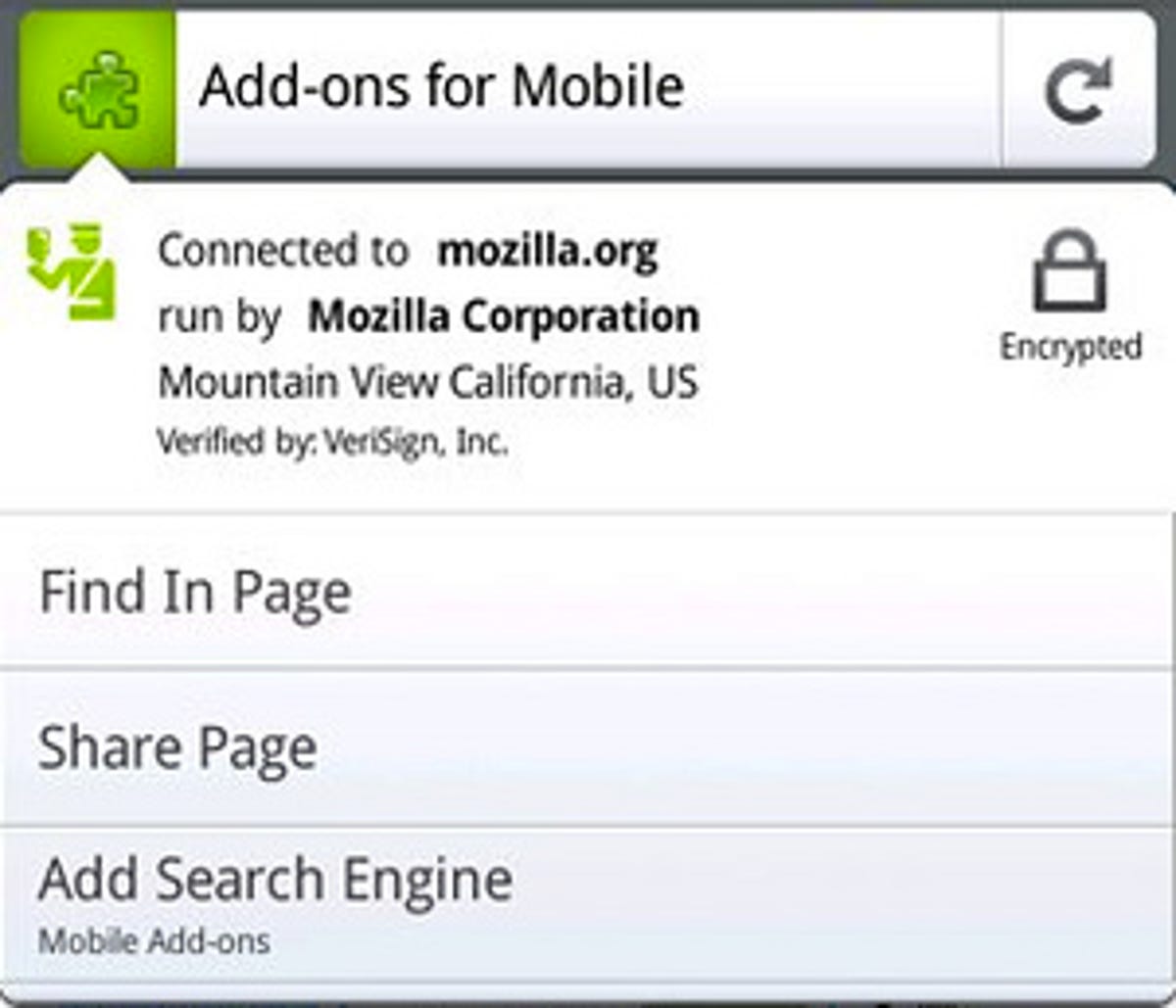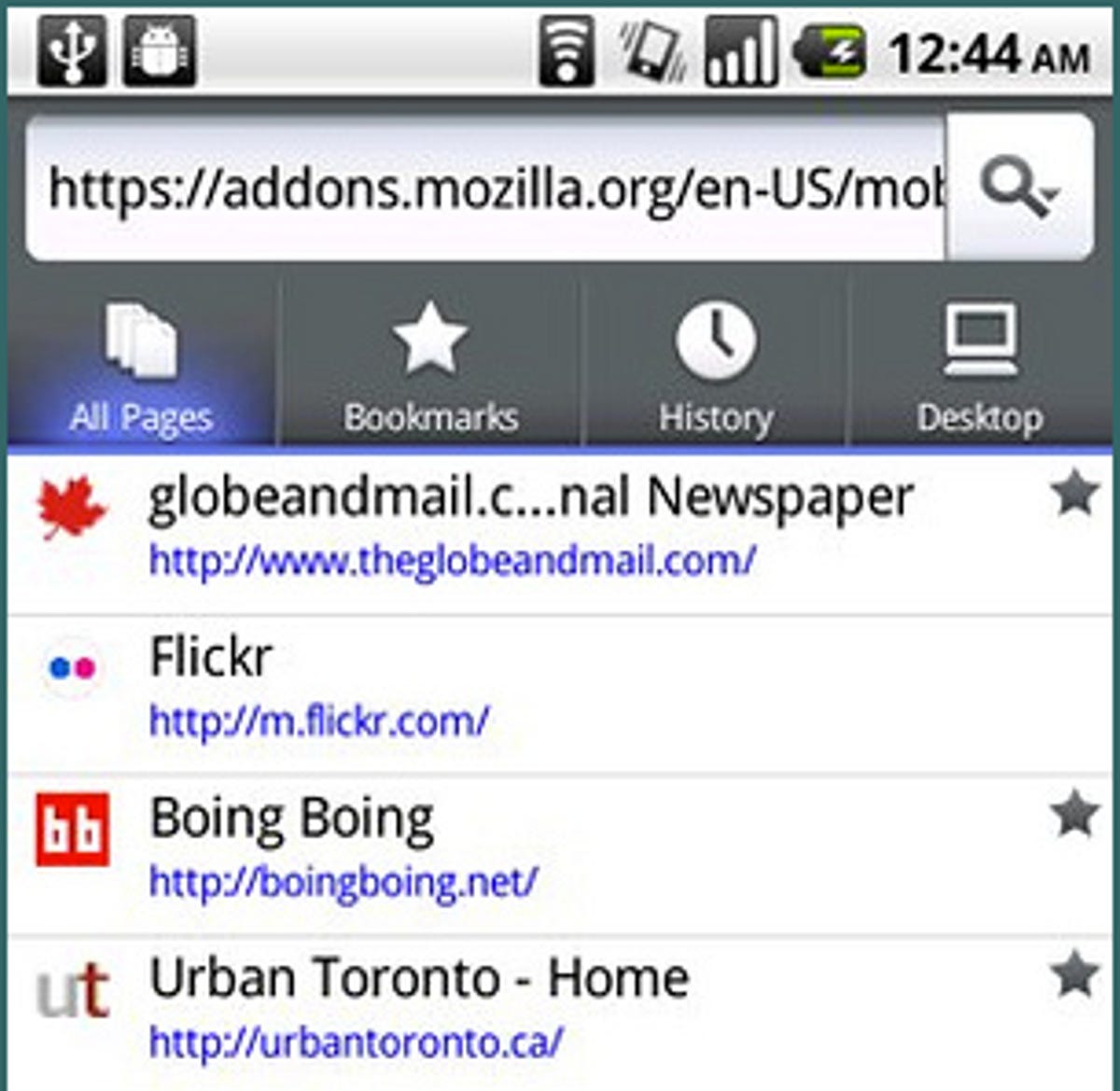We have to hand it to Mozilla: its mobile team has recently been hauling out tweaks and updates to its mobile Firefox browser for Android and (two) Nokia Maemo devices.
Mozilla unveiled the hotly anticipated Firefox for Android app (called Firefox 4 beta) early last month. It was a good first effort, but we balked at the beta software’s huge installer, slower performance, and scrolling inefficiencies. We weren’t the only ones, and Mozilla has gone to lengths to redesign its app in this second attempt.
Android-like interface
Although we’ll get around to the back-end changes, what really stands out is the app’s visual overhaul on its default start screen. The design has remained static for so long, since its early days as the Fennec alpha for Nokia’s Maemo platform in fact, that we can’t help but blink.
The app, as viewed on a Droid Incredible Android phone, still retains the “Awesomebar” up top, but now opens with an all-new start page that carries a similar look and feel as other Firefox pages online. There’s space to show previously visited tabs, promoted add-ons, and tabs from your other computers, assuming you use Firefox Sync. The start screen will henceforth be your first browser tab by default, though you can change this in the settings.
You’ll also notice that pages are now organized differently to provide combined or separate access to your bookmarks, browsing history, and synced computer tabs. Mozilla has also added favicons, small icons that can help you visually identify a URL by a thumbnail representation of its site logo. The multiple search engines (like Google, Wikipedia, Amazon, and Twitter) have moved from the bottom of the interface into the search bar; you’ll be able to switch among them after you start typing a query.
In addition to all we’ve mentioned above, the Firefox mobile team has polished up the design to make it better fit in with the Android look and feel. That means reshaped toolbar buttons, bubbly pop-ups, and reworked context menus.


Mozilla
New features
A few new features also find their way to the new Firefox for Android (and Maemo as well.) One is being able to resurrect an accidentally closed tab. Swiping left into the tab management gutter in Firefox Mobile will show you a thumbnail of the closed tab overlain with an “undo” button–you can tap that to revitalize the tab.
In addition, holding a link or Web page (a long press) will open the context menu, which now lets you share the content using the usual avenues of e-mail, Facebook, text, Twitter, and so on.
Smaller installer
The front-end additions and enhancements are always welcome, but a poky Firefox won’t make it in the real world. To that end, Firefox 4 beta 2 for mobile has a notably smaller installation size. Mozilla was able to reduce the APK file from roughly 43MB to 17MB, making it 60 percent of its former self. Android users will need to uninstall any previous versions and then reinstall, Mozilla cautions. It took us about 8 minutes to download over Verizon’s 3G network on our Droid Incredible prior to a speedy installation.
Mozilla has also done back-end work to make Firefox Mobile load pages faster; Mozilla claims it’s close to 25 percent faster on the SunSpider JavaScript benchmark than the default Android 2.2 browser. The team also did work on pinch-to-zoom and rendering text.


Still needs work
Pet peeves usually take a few days of heavy use to develop, but there are a few we’re noticing right away. We found text- and image-rendering still choppy, especially on CNET’s optimized mobile site. Mozilla also also needs to address Firefox Sync on mobile. Signing in through the Settings menu is intuitive enough so long as you remember the security key you used when registering Firefox Sync on your desktop. Recovering that information isn’t an option from this Firefox beta version.
You can download Firefox 4 beta 2 for Android or Nokia/Maemo, but keep two things in mind. First, as beta software, you’re almost guaranteed to run into some sort of instability or unpolished feature. Second, Android users should keep in mind that it only runs on Android 2.0 or later. If you do try it, let us know in the comments what you like or don’t like.



